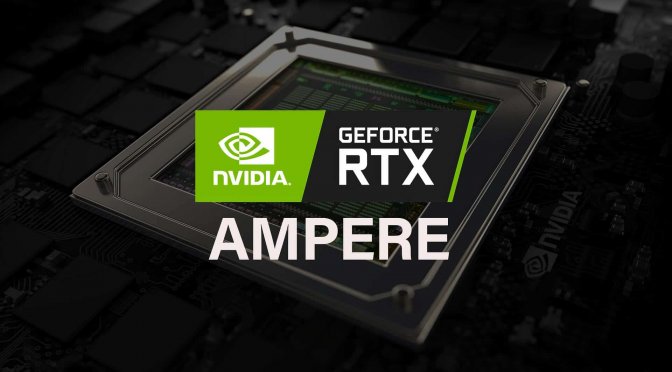Videocardz’s sources have claimed that the RTX 3060 Ti Ampere card will be launching soon after the RTX 3070. This should be the first budget mainstream offering from NVIDIA and will feature a new GA104-200 GPU core. The RTX 3060 Ti will be the next GPU to get released in the Ampere lineup.
According to WhyCry, Editor-in-Chief of Videocardz, there is currently no word on the non-Ti version of the RTX 3060 card. The non-Ti model will likely feature the GA106 GPU core though.
The RTX 3060 Ti card would be based on the GA104-200 GPU featuring 4864 CUDA cores and 8GB of GDDR6 memory clocked at 14 Gbps. The bus width will be 256-bit thus giving a total bandwidth of 448 GB/s. This Ti model will feature a core count greater than the Turing RTX 2080 Ti GPU which packs a total of 4352 cuda cores.
Since the board will naturally require less power, the TBP should be around 200W, with the reference design having 180W power envelope. This is a 5W increase over the RTX 2070 at 175W. If this TDP value is correct then RTX 3060 Ti will consume slightly more power than RTX 2070 and RTX 2060 SUPER, both of which are rated at 175W.
Currently there is no fixed launch date, but according to Videocardz it should around the end of October. As we know AMD is going to launch their Big Navi series on October 28, and that could be one reason why NVIDIA has decided to launch the Ti variant first. Also, the yields for the initial first batches of the Samsung 8nm node have been lower than expected, and also expensive, but the company expects the yields to improve in coming months.
NVIDIA also has plans to launch the GeForce RTX 3080 20GB and the RTX 3070 Ti 16GB after the AMD Radeon RX 6000 series announcement on October 28th, and we have already seen some leaks before from Gigabyte and Galax. The RTX 3080 20 GB SKU was also indirectly confirmed by NVIDIA in their recently released Ampere whitepaper.
Also note that the reason the RTX 3090 and RTX 3080 GPUs are not scaling linearly in gaming performance is because of the bottleneck caused by some game engines and binaries that are not designed to handle higher amount of GPU cores. But in software like vRAY, Octane, Luxmark, Blender etc. which can basically handle a huge amount of graphics horsepower, the driver stack and hardware will scale in a linear fashion to an extent. As you scale down the cores, it is not necessary for the performance to also scale down linearly.
We expect the RTX 3060 Ti to at least match the performance of the RTX 2080 GPU.
Stay tuned for more!
Hello, my name is NICK Richardson. I’m an avid PC and tech fan since the good old days of RIVA TNT2, and 3DFX interactive “Voodoo” gaming cards. I love playing mostly First-person shooters, and I’m a die-hard fan of this FPS genre, since the good ‘old Doom and Wolfenstein days.
MUSIC has always been my passion/roots, but I started gaming “casually” when I was young on Nvidia’s GeForce3 series of cards. I’m by no means an avid or a hardcore gamer though, but I just love stuff related to the PC, Games, and technology in general. I’ve been involved with many indie Metal bands worldwide, and have helped them promote their albums in record labels. I’m a very broad-minded down to earth guy. MUSIC is my inner expression, and soul.
Contact: Email

